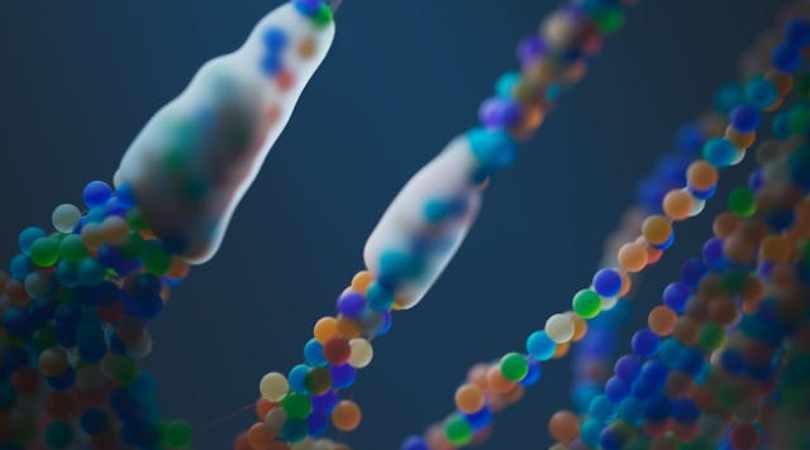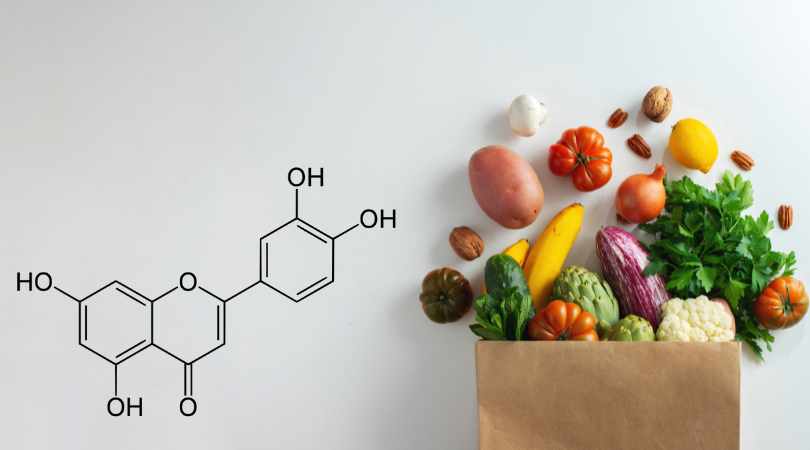Scientists have successfully restored the lost uricase enzyme, a key breakthrough in combating fructose-induced fat formation. This discovery offers new hope for preventing obesity and metabolic disorders by targeting how the body processes sugar and stores fat.
Limited Quantities Available! Order Today and Enjoy Free Shipping on Orders Over $100!
Fructose
A simple sugar found naturally in plants that promotes fat storage and disrupts cellular energy when consumed in excess.
Take Control of Fructose Before It Controls You
Fructose doesn’t just come from sugar. It’s a hidden metabolic switch your body can activate—no dessert required.
Even on a sugar-free diet, your body can still generate fructose internally from carbs, salt, or stress. This internal pathway quietly fuels fat storage, uric acid buildup, and the kind of low-energy inflammation that underlies so many modern health issues.
SugarShield is designed to support your body’s resilience against this process. With compounds like luteolin and tart cherry extract, it helps regulate the metabolic effects of fructose—whether it comes from food or your own cells.
Explore SugarShieldWhat is Fructose?
Fructose is a monosaccharide, or a simple sugar, that naturally occurs in plants – most notably in fruits, honey, and root vegetables. It’s also a key component of sucrose, a table sugar, which is composed of 50% fructose and 50% glucose (Sanders and Emery, 2003). However, in the modern diet, most fructose we consume is classified as ‘added sugar’ - isolated sugar preparations used as such, or added during food preparation and manufacturing (SACN, 2015). Most abundant is the form of high-fructose corn syrup, a processed sweetener found in everything from soft drinks to salad dressings. As a result, people often consume too much fructose indirectly, through these added sugars.
Fructose has become a controversial topic in human nutrition and metabolic health. Many people ask: “Is fructose bad for you?” The answer depends largely on how much you consume, in what form, and how your body processes it
Is Fructose a Monosaccharide? And Why It Matters
Yes—fructose is a monosaccharide, meaning it does not require digestion before absorption. Unlike glucose, which enters the bloodstream and is used by nearly every cell, fructose is primarily metabolized in the liver. There, it follows a unique pathway that bypasses the body’s typical energy-regulating checkpoints. This process is called fructolysis, and it begins with the enzyme fructokinase, which uses ATP (cellular energy) to phosphorylate fructose into fructose-1-phosphate.
While this allows for rapid energy processing in certain survival scenarios (like fruit season or famine), in modern conditions it can backfire. The result is a cascade of metabolic stress, particularly when fructose intake is frequent or excessive.
Fructose biochemistry and its relation to Metabolic Dysfunction.
Fructose is an available monosaccharide, meaning it does not require digestion before absorption. It can be digested by human enzymes and enters intermediary metabolism resulting in high glycemic index (Dholariya and Orrick, 2022). Unlike glucose, which enters the bloodstream and is used by nearly every cell, fructose utilises a different membrane transporter - GLUT5 - and is primarily metabolized in the liver. There, it follows a unique pathway that bypasses the body’s typical energy-regulating checkpoints. This process is called fructolysis, and it begins with the enzyme fructokinase, which uses ATP (cellular energy) to phosphorylate fructose into fructose-1-phosphate. The process is not unique to liver cells, but energy sensitive tissues like the brain also metabolize fructose in the same way, increasing risk of cell energy disruption.
Understanding this process may help explain why so many people struggle with energy, weight, and inflammation – even when making healthy choices. Studies suggest that fructose metabolism - a process of absorbing fructose by the lumen of the small intestine and breaking it down in the liver - plays a central role in modern chronic illness such as diabetes, non alcoholic fatty liver, obesity, increased uric acid levels (Jegatheesan and De Bandt, 2017). Excessive activation of the fructose pathway – whether dietary or internal – can disrupt cellular energy, drive fat gain, and impair hormonal signals like leptin and insulin.
Liv3 Health is aiming to address the complex relationship between fructose consumption, metabolic health, and overall well-being, with the goal of finding ways to mitigate potential risks and promote healthier dietary choices through SugarShield.
What Does Fructose Do in the Body?
From an evolutionary standpoint, this mechanism allowed for rapid energy processing in order to stimulate epigenetic changes and metabolic alterations promoting survival scenarios (like famine) by storing energy in fat cells (DiNicolantonio et al., 2015). In modern conditions it can backfire: fructose activates a number of signaling pathways - a cascade of metabolic stress, particularly when fructose intake is frequent or excessive - which explain its detrimental effects on the body, especially on the liver, where it is stored and absorbed. With better access to plant based diet and the concept of added sugar we began to over consume fructose. Food production companies benefit more from utilising fructose over sucrose as it requires less amount of fructose to reach the same sweetness level and it dissolves better in liquids, making it more favourable to utilise in beverage production. Therefore, more people unconsciously consume excessive amounts of fructose as the source is indirect, invisible.
One of the major concerns is that fructose is lipogenic and drives hepatic de novo lipogenesis - a process of converting excessive carbons into at. In the liver, the excessive amount of unprocessed fructose is converted into triglycerides (fat molecules), many of which are exported into the bloodstream or stored in the liver itself – contributing to non-alcoholic fatty liver disease (NAFLD) and obesity (Jung et al., 2022).
Fructose metabolism also raises uric acid levels, a waste product of interaction between fructokinase and ATP. Uric acid is a byproduct that not only contributes to inflammation and oxidative stress but also directly impairs mitochondrial function—the core machinery of cellular energy production. As mitochondria become less efficient, the body’s capacity to produce energy declines. The result may be linked to cardiovascular problems and increase the risk of gout (Muriel et al., 2021). These downstream effects contribute to insulin resistance, metabolic syndrome, and even cognitive symptoms like brain fog.
The structure of fructose and its unregulated metabolism mean that even small amounts can have disproportionate effects on health – especially when combined with other stressors like poor sleep, dehydration, or a high-sodium diet. Moreover, fructose contributes to our appetite levels by affecting appetite hormone ghrelin. While both glucose and fructose can suppress ghrelin levels after a meal, fructose tends to blunt this suppression compared to glucose leading to overeating.
Therefore, fructose can be considered as one of the major modern metabolic dysfunction drivers. In Liv3Health we believe that educating people on potential causes of fructose overconsumption may contribute to better health and improved lifestyle.
What Is High-Fructose Corn Syrup – and Why Is It a Problem?
High-fructose corn syrup (HFCS) is a processed sweetener made of corn starch. HFCS is not dramatically higher in fructose than sucrose (as contains 55% and 45% of fructose and glucose accordingly), but it’s cheap, liquid, and easy to overconsume. Found in sodas, cereals, sauces, and breads, it delivers a concentrated dose of fructose with little to no fiber or nutrients to slow absorption. HFCS provides the same sweetness to the beverage but in less amount and more dissolvable than sucrose therefore favoured by production companies. This makes HFCS particularly potent in triggering fat storage and energy crashes.
HFCS is not problematic in the human diet because of the high amount of fructose, but because it provides higher doses of rapid fructose absorption which can negatively impact liver health, insulin sensitivity, and overall metabolic function (Bray et al., 2004).
Fructose intolerance and Fructose Control.
There are several factors affecting our ability to regulate fructose metabolism. Some individuals have a condition called hereditary fructose intolerance, where their body lacks the enzyme aldolase B, making it difficult to metabolize fructose. Even in people without this genetic issue, a sensitivity to fructose is increasingly recognized—especially in the form of fructose malabsorption, where excess unabsorbed fructose ferments in the gut, causing bloating and discomfort. SugarShield strives to improve long-term health and vitality by focusing on fructose, a root cause of metabolic damage. The underlying mechanism lies on the concept of fructose control - a scientific approach of regulating fructose metabolism.
The mechanism underlying SugarShield fructose control is liposomal delivery of active ingredients: luteolin - a flavonoid found in fruits/veggies that increases anti-inflammatory, antioxidant property and tart cherry extract, formulated to inhibit fructokinase (enzyme that breaks down the fructose in the liver cells). By blocking fructokinase we aim to stop fructose from draining cellular energy and restore your energy and improve metabolic health.
These statements have not been evaluated by the FDA. This product is not intended to diagnose, treat, cure, or prevent any disease.
Endogenous Fructose: The Hidden Factor
Even more surprising is that fructose isn’t just something we eat – it can be produced inside the body. This process is classified as endogenous fructose production - inside our body. The process is driven by sorbitol (carbohydrate derived from sugars also known as polyol), which converts our glucose into fructose through the polyol pathway under the stress, dehydration, or high-carb/salt intake (Hannou et al., 2018). This endogenous fructose production means you can experience the effects of fructose metabolism even on a sugar-free diet.
Endogenous fructose production in highly increased during diabetic hyperglycemia development (high blood sugar (glucose) levels of individuals with diabetes) and is considered a main driver of diabetic microvascular complications (health problems arising from damage of small blood vessels due to chronic high blood sugar (glucose) levels).
Why Fructose Is Central to Metabolic Dysfunction
Taken together, these effects suggest that fructose plays a central role in modern chronic illness. Excessive activation of the fructose pathway—whether dietary or internal—can disrupt cellular energy, drive fat gain, and impair hormonal signals like leptin and insulin. Understanding how fructose works may help explain why so many people struggle with energy, weight, and inflammation—even when making healthy choices.
Summary
If you’ve been wondering what is a fructose, how it differs from glucose, or why high-fructose corn syrup is bad for you, the answer lies in its unique fructose metabolism that, when consumed in excess, negatively affects our metabolic health - mainly through added sugars like high-fructose corn syrup. Fructose isn’t inherently evil – but the way it’s processed, can tip your body into a state of metabolic imbalance.
Overconsumed fructose can lead to fat accumulation, insulin resistance, non-alcoholic fatty liver disease (NAFLD), and increased uric acid levels, contributing to obesity, type 2 diabetes, metabolic syndrome, and even cognitive symptoms like brain fog.
Limiting intake, avoiding hidden sources, supporting your body’s response to fructose and managing both dietary intake and metabolic response through targeted nutrition may be essential steps toward restoring metabolic health.
References:
- Bray, G. A., Nielsen, S. J., & Popkin, B. M. (2004). Consumption of high-fructose corn syrup in beverages may play a role in the epidemic of obesity. The American Journal of Clinical Nutrition, 79(4), 537-543. https://doi.org/10.1093/ajcn/79.4.537
- Dholariya, S. J., & Orrick, J. A. (2022). Biochemistry, fructose metabolism. StatPearls Publishing. https://www.ncbi.nlm.nih.gov/books/NBK576428/
- DiNicolantonio, J. J., O'Keefe, J. H., & Lucan, S. C. (2015). Added fructose: a principal driver of type 2 diabetes mellitus and its consequences. Mayo Clinic Proceedings, 90(3), 372-381. https://www.mayoclinicproceedings.org/article/S0025-6196(15)00040-3/fulltext
- Hannou, S. A., McKeown, N. M., & Herman, M. A. (2018). Fructose metabolism and metabolic disease. The journal of clinical investigation, 128(2), 545-555. https://doi.org/10.1172/JCI96702
- Jegatheesan, P., & De Bandt, J.-P. (2017). Fructose and NAFLD: The Multifaceted Aspects of Fructose Metabolism. Nutrients, 9(230). https://mdpi-res.com/nutrients/nutrients-09-00230/article_deploy/nutrients-09-00230-v2.pdf?version=1488790824
- Jung, S., Bae, H., Song, W.-S., & Jang, C. (2022). Dietary Fructose and Fructose-Induced Pathologies. Annual review of nutrition, 42(August 2022), 45-66. https://doi.org/10.1146/annurev-nutr-062220-025831
- Muriel, P., López-Sánchez, P., & Ramos-Tovar, E. (2021). Fructose and the liver. International Journal of Molecular Sciences, 22(6969). https://doi.org/10.3390/ijms22136969
- Sanders, T. and Emery, P. (2003). Molecular basis of human nutrition. London: Taylor & Francis.
- Scientific Advisory Committee on Nutrition (SACN). (2015) Carbohydrates and health. London: The Stationery Office. Available at: https://assets.publishing.service.gov.uk/media/5a7f7cc3ed915d74e622ac2a/SACN_Carbohydrates_and_Health.pdf (Accessed: 21 July 20. (n.d.).






